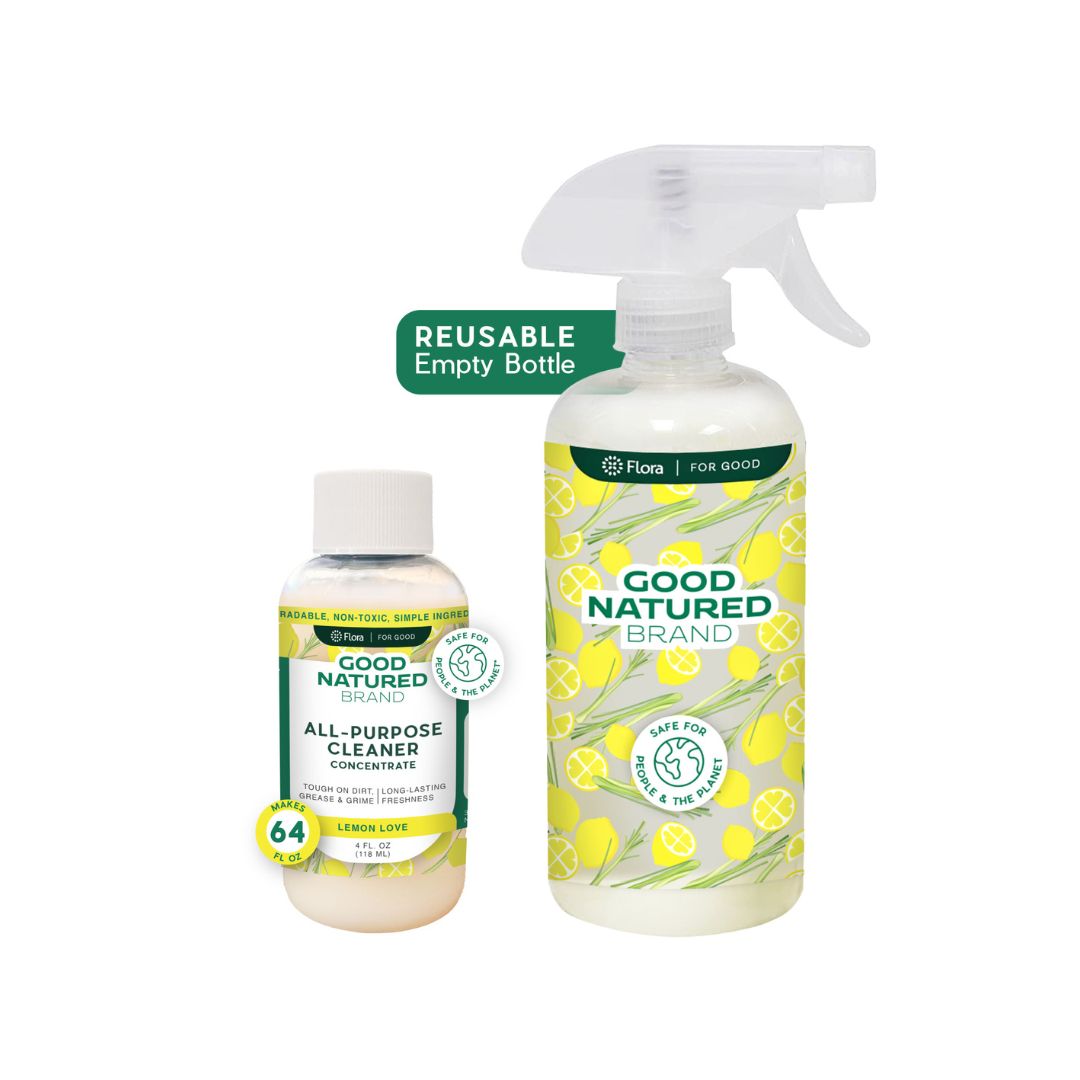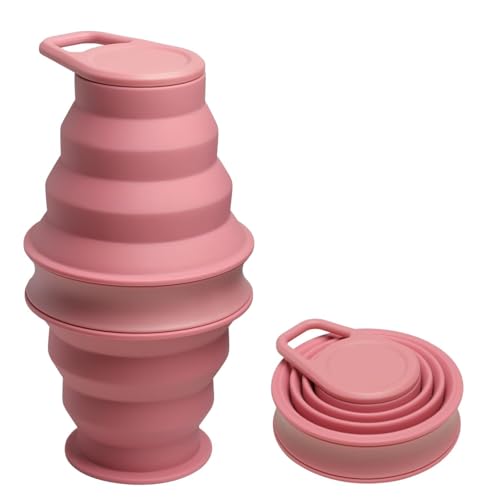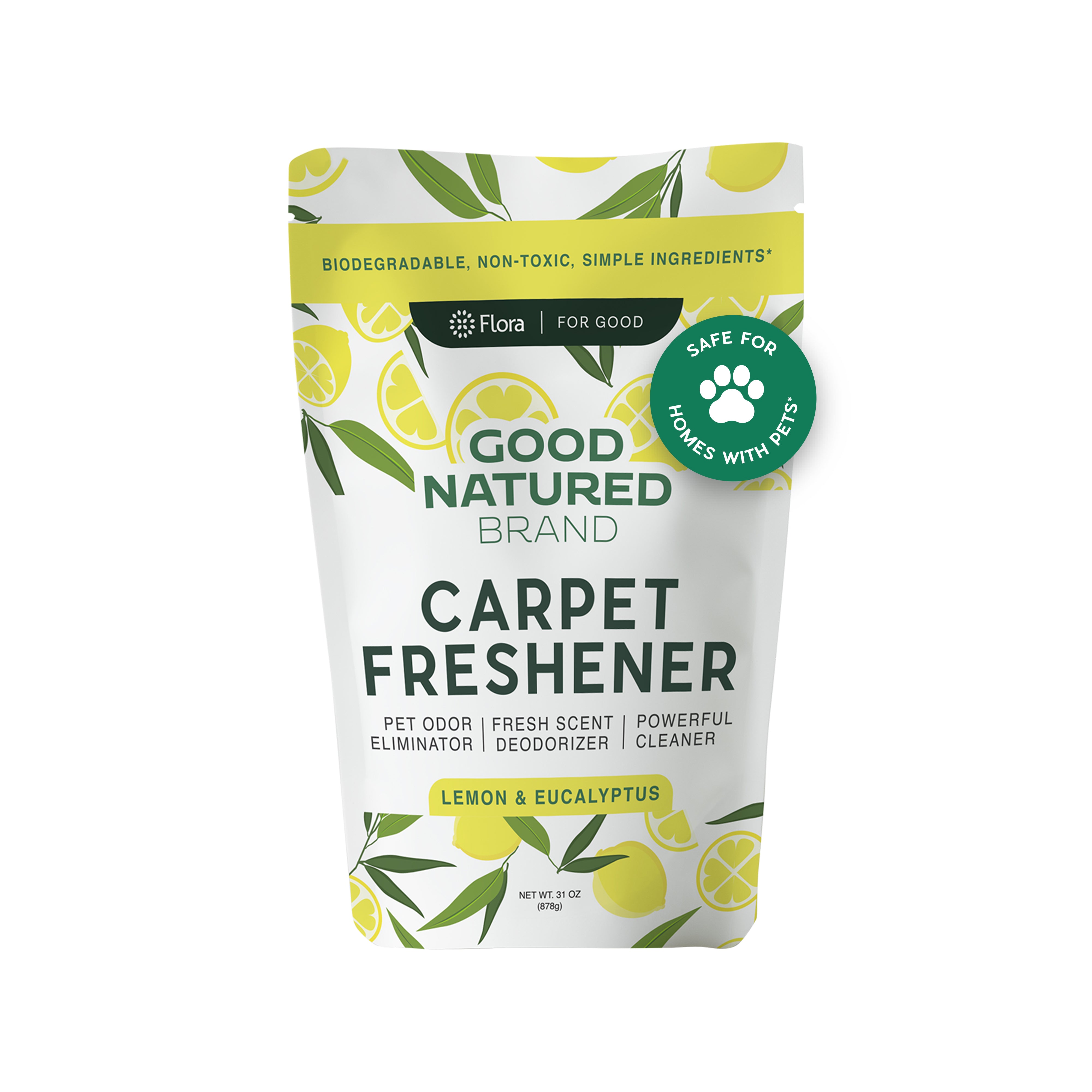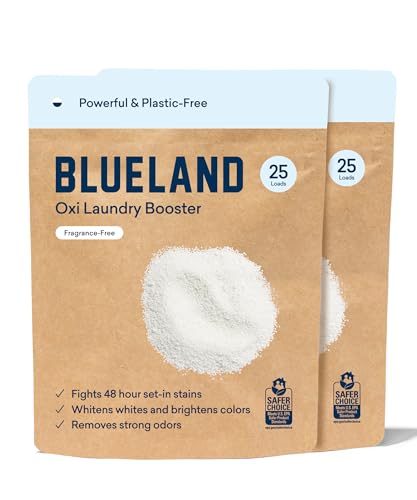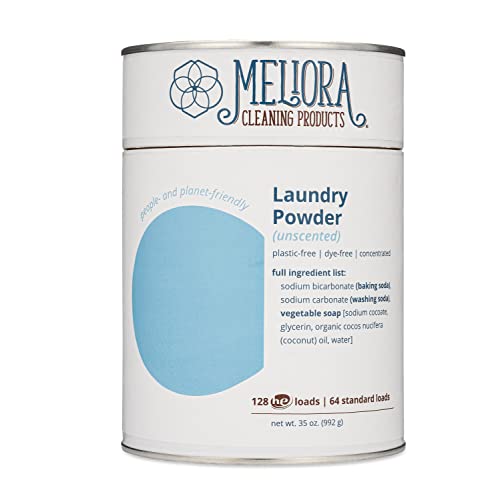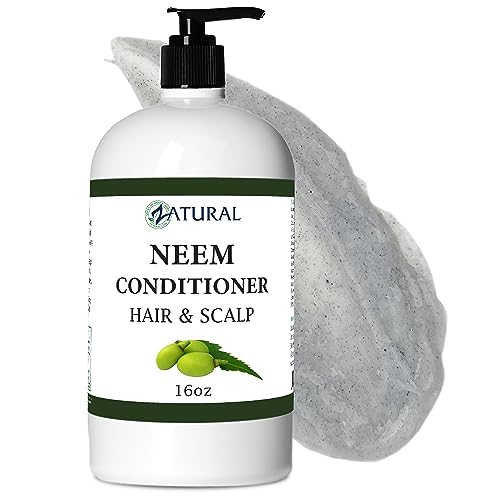
Zatural Neem Conditioner - Moisturizes & Soothes, Promotes Healthy Shine - 16oz


Carbon
High RiskCarbon is an amorphous form of elemental carbon commonly used in various products. It serves multiple functions, including acting as a pigment, filler, or adsorbent, depending on the formulation. Its versatile applications span across personal care, cosmetics, and other industries.
Sustai Insights
Carbon has functional benefits such as enhancing product texture and stability. It is generally considered low in health risks, with minimal concerns regarding carcinogenicity, allergies, and reproductive toxicity. However, its use is subject to high restrictions due to regulatory concerns about safety and environmental impact, including potential pollution and bioaccumulation. The overall risk associated with carbon is high, necessitating careful consideration in product use. Alternatives like plant-based pigments or biodegradable fillers may offer safer options.
Stearalkonium Chloride
High RiskStearalkonium chloride is a quaternary ammonium compound commonly used as a conditioning agent in hair and skin care products. It functions primarily as an emulsifier and surfactant, helping to improve product texture and enhance moisture retention.
Sustai Insights
Stearalkonium chloride offers functional benefits as a conditioning agent and emulsifier. However, it carries a high concern for allergies and immunotoxicity, with restrictions noted in some regulatory frameworks. Potential health risks include skin irritation and respiratory issues, while environmental risks relate to its pollutant potential. Regulatory agencies have raised warnings about its use, leading to an overall high-risk assessment. Users should consider safer alternatives, especially in sensitive applications.
Hydrolyzed Wheat Protein
High RiskHydrolyzed wheat protein is produced by acid or enzymatic hydrolysis of wheat gluten, resulting in smaller protein fragments that can be easily absorbed by hair and skin. This ingredient is commonly used in personal care products for its moisturizing and film-forming properties.
Sustai Insights
Hydrolyzed wheat protein offers functional benefits, such as enhancing moisture retention and improving product texture. It is generally considered low risk for carcinogenicity, with moderate potential for allergies. Regulatory restrictions apply, particularly for products that must avoid specific allergens. Environmental concerns include its potential as a pollutant; however, it is not known for bioaccumulation. Safe usage practices are recommended for sensitive individuals, and alternatives like hydrolyzed soy protein may provide similar benefits with reduced allergenic potential. Overall, the ingredient presents a high risk assessment due to use restrictions and allergy concerns.
Phenoxyethanol
Medium RiskPhenoxyethanol is a preservative used in cosmetics and personal care products to prevent microbial growth and extend shelf life. It is commonly found in formulations such as lotions, creams, and serums.
Sustai Insights
Phenoxyethanol serves effectively as a preservative, ensuring product stability and safety by inhibiting microbial growth. It is considered to have low health risks regarding carcinogenicity, allergies, and reproductive toxicity. However, moderate use restrictions exist, and regulatory bodies have advised caution in specific applications. Environmental concerns include its potential as a pollutant, although it is not highly bioaccumulative. Overall, the ingredient presents a medium risk level, with safe usage practices recommended and alternative preservatives available for those seeking greener options.
Peg 20 Castor Oil
Medium RiskPEG-20 castor oil is a polyethylene glycol derivative of castor oil that acts as an emulsifier and surfactant in various personal care and cosmetic products. It enhances texture, improves spreadability, and stabilizes formulations by allowing oil and water components to mix effectively.
Sustai Insights
PEG-20 castor oil offers functional benefits as an effective emulsifier, improving product consistency and application. However, it carries moderate health risks, including potential skin and eye irritation, and concerns regarding allergenic properties. Environmentally, it poses low bioaccumulation risk and is not known to be a significant pollutant. Regulatory oversight indicates low use restrictions in several regions. Overall, it presents a medium risk level, suggesting caution in usage, with potential alternatives available for safer formulations.
Cetearyl Alcohol
Low RiskCetearyl alcohol is a mixture of cetyl and stearyl alcohol, primarily used as an emulsifier and thickener in cosmetic formulations. It helps stabilize products, improve texture, and enhance moisturizing properties, making it common in creams and lotions.
Sustai Insights
Cetearyl alcohol offers functional benefits as an effective emulsifier and skin-conditioning agent, contributing to product stability and texture. It is generally recognized as safe, with low concerns for carcinogenicity, allergies, or reproductive toxicity. Environmental risks are minimal, as it is biodegradable and has low pollutant potential. Regulatory bodies have not imposed significant restrictions on its use. Overall, cetearyl alcohol is assessed to carry low risk, making it a suitable ingredient choice in cosmetic products.
Panthenol, D
Low RiskPanthenol, also known as provitamin B5, is a humectant commonly used in cosmetic and personal care products. It functions primarily as a moisturizer, enhancing skin hydration and improving the appearance of hair by imparting shine and softness.
Sustai Insights
Panthenol is effective in retaining moisture, thus providing functional benefits for skin and hair care products. It is generally recognized as safe, with low concerns regarding carcinogenicity, allergies, and developmental toxicity. However, potential cumulative exposure from multiple sources exists. Environmental risks are minimal, and it is not bioaccumulative. Regulatory bodies have not issued significant warnings; therefore, the overall risk level is assessed as low. For optimal use, it is recommended to follow product guidelines, and alternatives such as glycerin may also be considered for moisturizing effects.
Vegetarian Glycerin
Low RiskVegetarian glycerin, also known as glycerol, is a colorless, odorless, and viscous liquid derived from plant sources. It is primarily used as a humectant, solvent, and emollient in various personal care products, helping to retain moisture and improve texture.
Sustai Insights
Vegetarian glycerin offers functional benefits as an effective humectant, promoting hydration and skin smoothness. It is biodegradable and typically sustainably sourced. Health risks associated with glycerin are low, with no significant concerns for carcinogenicity, allergens, or reproductive toxicity. Environmental risks are minimal, and it is not subject to major regulatory warnings. Overall, the risk level for this ingredient is low, making it a safe choice in formulations. Safe usage practices include ensuring proper concentrations in products, and alternatives such as propylene glycol exist but may have differing properties.
Water
Low RiskWater is a clear, colorless liquid essential for various biological processes. It serves as a solvent in formulations, facilitating the dissolution of other ingredients and enhancing product texture and application. Additionally, water plays a crucial role in hydration and is a key component in many cosmetic and personal care products.
Sustai Insights
Water is an effective solvent and hydrator, contributing to the texture and efficacy of formulations. It is biodegradable and generally regarded as safe, with low concerns regarding carcinogenicity, allergies, and reproductive toxicity. However, excessive water usage can lead to environmental concerns, particularly regarding resource depletion. Regulatory bodies do not impose restrictions on water use in cosmetics. Overall, the risks associated with water are low, making it a safe and essential ingredient.
Dimethyl Sulfone
Low RiskDimethyl sulfone, also known as MSM, is a naturally occurring organic sulfur compound often used in dietary supplements and cosmetics for its purported benefits in joint health and as a skin conditioning agent. It is generally recognized for its role in enhancing the absorption of other ingredients and providing a source of sulfur.
Sustai Insights
Dimethyl sulfone is recognized for its functional benefits, including potential anti-inflammatory properties and support for joint health. It is generally considered safe, with low concerns for carcinogenicity, allergies, or reproductive toxicity. Environmental impact assessments indicate low pollutant potential and no bioaccumulation. Regulatory bodies have not imposed restrictions, highlighting its favorable safety profile. Overall, the ingredient poses low risk, making it a viable option in formulations, with no immediate safer alternatives noted.
Helianthus Annuus (Sunflower) Seed
Low RiskHelianthus annuus (sunflower) seed is derived from the seeds of the sunflower plant and is commonly used in various cosmetic and personal care products. It serves primarily as an emollient and skin conditioning agent, providing moisture and enhancing the texture of formulations.
Sustai Insights
Helianthus annuus (sunflower) seed offers functional benefits, including skin conditioning and moisturizing properties, while being sustainably sourced and biodegradable. Health risks are minimal, with low concerns for carcinogenicity, allergies, and reproductive toxicity. Environmentally, it presents low risks of pollution or bioaccumulation. Regulatory assessments indicate no current restrictions. Overall, it is considered a low-risk ingredient, and safe usage practices should be maintained. Alternative ingredients may include other plant-based oils, but the sunflower seed oil remains a viable option.
Brassica Campestris (Rapeseed) Seed Oil
Low RiskBrassica campestris (rapeseed) seed oil is a vegetable oil derived from the seeds of the rapeseed plant. It is primarily used in cosmetic formulations for its emollient properties, enhancing skin feel and moisture retention.
Sustai Insights
Brassica campestris (rapeseed) seed oil offers functional benefits as a moisturizer and skin conditioner due to its emollient characteristics. It is sustainably sourced and generally considered low risk for health impacts, with minimal concerns regarding carcinogenicity, allergies, and reproductive toxicity. Environmental risks are also low, with no significant pollutant or bioaccumulation potential identified. Regulatory bodies have not imposed restrictions on its use. Recommendations include normal cosmetic application, and while alternatives exist, this ingredient stands out for its safety profile and functional attributes.
Cetearyl Alcohol
Low RiskCetearyl alcohol is a mixture of cetyl and stearyl alcohol, primarily used as an emulsifier and thickener in cosmetic formulations. It helps stabilize products, improve texture, and enhance moisturizing properties, making it common in creams and lotions.
Sustai Insights
Cetearyl alcohol offers functional benefits as an effective emulsifier and skin-conditioning agent, contributing to product stability and texture. It is generally recognized as safe, with low concerns for carcinogenicity, allergies, or reproductive toxicity. Environmental risks are minimal, as it is biodegradable and has low pollutant potential. Regulatory bodies have not imposed significant restrictions on its use. Overall, cetearyl alcohol is assessed to carry low risk, making it a suitable ingredient choice in cosmetic products.
Panthenol, D
Low RiskPanthenol, also known as provitamin B5, is a humectant commonly used in cosmetic and personal care products. It functions primarily as a moisturizer, enhancing skin hydration and improving the appearance of hair by imparting shine and softness.
Sustai Insights
Panthenol is effective in retaining moisture, thus providing functional benefits for skin and hair care products. It is generally recognized as safe, with low concerns regarding carcinogenicity, allergies, and developmental toxicity. However, potential cumulative exposure from multiple sources exists. Environmental risks are minimal, and it is not bioaccumulative. Regulatory bodies have not issued significant warnings; therefore, the overall risk level is assessed as low. For optimal use, it is recommended to follow product guidelines, and alternatives such as glycerin may also be considered for moisturizing effects.
Vegetarian Glycerin
Low RiskVegetarian glycerin, also known as glycerol, is a colorless, odorless, and viscous liquid derived from plant sources. It is primarily used as a humectant, solvent, and emollient in various personal care products, helping to retain moisture and improve texture.
Sustai Insights
Vegetarian glycerin offers functional benefits as an effective humectant, promoting hydration and skin smoothness. It is biodegradable and typically sustainably sourced. Health risks associated with glycerin are low, with no significant concerns for carcinogenicity, allergens, or reproductive toxicity. Environmental risks are minimal, and it is not subject to major regulatory warnings. Overall, the risk level for this ingredient is low, making it a safe choice in formulations. Safe usage practices include ensuring proper concentrations in products, and alternatives such as propylene glycol exist but may have differing properties.
Water
Low RiskWater is a clear, colorless liquid essential for various biological processes. It serves as a solvent in formulations, facilitating the dissolution of other ingredients and enhancing product texture and application. Additionally, water plays a crucial role in hydration and is a key component in many cosmetic and personal care products.
Sustai Insights
Water is an effective solvent and hydrator, contributing to the texture and efficacy of formulations. It is biodegradable and generally regarded as safe, with low concerns regarding carcinogenicity, allergies, and reproductive toxicity. However, excessive water usage can lead to environmental concerns, particularly regarding resource depletion. Regulatory bodies do not impose restrictions on water use in cosmetics. Overall, the risks associated with water are low, making it a safe and essential ingredient.
Dimethyl Sulfone
Low RiskDimethyl sulfone, also known as MSM, is a naturally occurring organic sulfur compound often used in dietary supplements and cosmetics for its purported benefits in joint health and as a skin conditioning agent. It is generally recognized for its role in enhancing the absorption of other ingredients and providing a source of sulfur.
Sustai Insights
Dimethyl sulfone is recognized for its functional benefits, including potential anti-inflammatory properties and support for joint health. It is generally considered safe, with low concerns for carcinogenicity, allergies, or reproductive toxicity. Environmental impact assessments indicate low pollutant potential and no bioaccumulation. Regulatory bodies have not imposed restrictions, highlighting its favorable safety profile. Overall, the ingredient poses low risk, making it a viable option in formulations, with no immediate safer alternatives noted.
Helianthus Annuus (Sunflower) Seed
Low RiskHelianthus annuus (sunflower) seed is derived from the seeds of the sunflower plant and is commonly used in various cosmetic and personal care products. It serves primarily as an emollient and skin conditioning agent, providing moisture and enhancing the texture of formulations.
Sustai Insights
Helianthus annuus (sunflower) seed offers functional benefits, including skin conditioning and moisturizing properties, while being sustainably sourced and biodegradable. Health risks are minimal, with low concerns for carcinogenicity, allergies, and reproductive toxicity. Environmentally, it presents low risks of pollution or bioaccumulation. Regulatory assessments indicate no current restrictions. Overall, it is considered a low-risk ingredient, and safe usage practices should be maintained. Alternative ingredients may include other plant-based oils, but the sunflower seed oil remains a viable option.
Carbon
High RiskCarbon is an amorphous form of elemental carbon commonly used in various products. It serves multiple functions, including acting as a pigment, filler, or adsorbent, depending on the formulation. Its versatile applications span across personal care, cosmetics, and other industries.
Sustai Insights
Carbon has functional benefits such as enhancing product texture and stability. It is generally considered low in health risks, with minimal concerns regarding carcinogenicity, allergies, and reproductive toxicity. However, its use is subject to high restrictions due to regulatory concerns about safety and environmental impact, including potential pollution and bioaccumulation. The overall risk associated with carbon is high, necessitating careful consideration in product use. Alternatives like plant-based pigments or biodegradable fillers may offer safer options.
Brassica Campestris (Rapeseed) Seed Oil
Low RiskBrassica campestris (rapeseed) seed oil is a vegetable oil derived from the seeds of the rapeseed plant. It is primarily used in cosmetic formulations for its emollient properties, enhancing skin feel and moisture retention.
Sustai Insights
Brassica campestris (rapeseed) seed oil offers functional benefits as a moisturizer and skin conditioner due to its emollient characteristics. It is sustainably sourced and generally considered low risk for health impacts, with minimal concerns regarding carcinogenicity, allergies, and reproductive toxicity. Environmental risks are also low, with no significant pollutant or bioaccumulation potential identified. Regulatory bodies have not imposed restrictions on its use. Recommendations include normal cosmetic application, and while alternatives exist, this ingredient stands out for its safety profile and functional attributes.
Phenoxyethanol
Medium RiskPhenoxyethanol is a preservative used in cosmetics and personal care products to prevent microbial growth and extend shelf life. It is commonly found in formulations such as lotions, creams, and serums.
Sustai Insights
Phenoxyethanol serves effectively as a preservative, ensuring product stability and safety by inhibiting microbial growth. It is considered to have low health risks regarding carcinogenicity, allergies, and reproductive toxicity. However, moderate use restrictions exist, and regulatory bodies have advised caution in specific applications. Environmental concerns include its potential as a pollutant, although it is not highly bioaccumulative. Overall, the ingredient presents a medium risk level, with safe usage practices recommended and alternative preservatives available for those seeking greener options.
Stearalkonium Chloride
High RiskStearalkonium chloride is a quaternary ammonium compound commonly used as a conditioning agent in hair and skin care products. It functions primarily as an emulsifier and surfactant, helping to improve product texture and enhance moisture retention.
Sustai Insights
Stearalkonium chloride offers functional benefits as a conditioning agent and emulsifier. However, it carries a high concern for allergies and immunotoxicity, with restrictions noted in some regulatory frameworks. Potential health risks include skin irritation and respiratory issues, while environmental risks relate to its pollutant potential. Regulatory agencies have raised warnings about its use, leading to an overall high-risk assessment. Users should consider safer alternatives, especially in sensitive applications.
Hydrolyzed Wheat Protein
High RiskHydrolyzed wheat protein is produced by acid or enzymatic hydrolysis of wheat gluten, resulting in smaller protein fragments that can be easily absorbed by hair and skin. This ingredient is commonly used in personal care products for its moisturizing and film-forming properties.
Sustai Insights
Hydrolyzed wheat protein offers functional benefits, such as enhancing moisture retention and improving product texture. It is generally considered low risk for carcinogenicity, with moderate potential for allergies. Regulatory restrictions apply, particularly for products that must avoid specific allergens. Environmental concerns include its potential as a pollutant; however, it is not known for bioaccumulation. Safe usage practices are recommended for sensitive individuals, and alternatives like hydrolyzed soy protein may provide similar benefits with reduced allergenic potential. Overall, the ingredient presents a high risk assessment due to use restrictions and allergy concerns.
Peg 20 Castor Oil
Medium RiskPEG-20 castor oil is a polyethylene glycol derivative of castor oil that acts as an emulsifier and surfactant in various personal care and cosmetic products. It enhances texture, improves spreadability, and stabilizes formulations by allowing oil and water components to mix effectively.
Sustai Insights
PEG-20 castor oil offers functional benefits as an effective emulsifier, improving product consistency and application. However, it carries moderate health risks, including potential skin and eye irritation, and concerns regarding allergenic properties. Environmentally, it poses low bioaccumulation risk and is not known to be a significant pollutant. Regulatory oversight indicates low use restrictions in several regions. Overall, it presents a medium risk level, suggesting caution in usage, with potential alternatives available for safer formulations.
Discover the nourishing benefits of Zatural Neem Scalp Conditioner, a pure organic solution designed to revitalize both hair and scalp. This 16-ounce conditioner is perfect for combating dryness and promoting healthy, shiny hair.
- Moisturizing and Soothing: This conditioner is infused with organic neem and aloe, deeply hydrating and alleviating dry, itchy scalp conditions while enhancing hair shine.
- Rich in Antioxidants: Packed with antioxidants, it supports scalp health and strengthens hair roots, promoting thick, strong hair.
- Gentle and Effective: Suitable for all ages, this conditioner addresses issues caused by dryness, psoriasis, and eczema, providing relief without harsh chemicals.
- Easy Application: Simply wet hair, apply a generous amount, massage into the scalp, let sit for 3-5 minutes, and rinse for soft, manageable hair.
- Sustainable Ingredients: Made with responsibly sourced organic ingredients, this conditioner embodies Zatural's commitment to health, sustainability, and customer satisfaction.
Subscribe & Save with Sustai
- Best Price Guarantee: Always enjoy the lowest prices on sustainable home essentials.
- No Surprises: We’ll notify you before shipping. No hidden fees, ever.
- You’re in Charge: Change, pause, or cancel your subscription anytime with ease.
- Eco-Friendly Deliveries: Our grouped shipments mean less packaging and lower emissions.
Join us on a sustainable journey. Special offers for a limited time! Prices and promotions may change.
Recommended Products
Discover the nourishing benefits of Zatural Neem Scalp Conditioner, a pure organic solution designed to revitalize both hair and scalp. This 16-ounce conditioner is perfect for combating dryness and promoting healthy, shiny hair.
- Moisturizing and Soothing: This conditioner is infused with organic neem and aloe, deeply hydrating and alleviating dry, itchy scalp conditions while enhancing hair shine.
- Rich in Antioxidants: Packed with antioxidants, it supports scalp health and strengthens hair roots, promoting thick, strong hair.
- Gentle and Effective: Suitable for all ages, this conditioner addresses issues caused by dryness, psoriasis, and eczema, providing relief without harsh chemicals.
- Easy Application: Simply wet hair, apply a generous amount, massage into the scalp, let sit for 3-5 minutes, and rinse for soft, manageable hair.
- Sustainable Ingredients: Made with responsibly sourced organic ingredients, this conditioner embodies Zatural's commitment to health, sustainability, and customer satisfaction.

You can have at most 2 Sustainable Steals products in your cart
Customer Reviews
Customers’ View
Customers appreciate the effectiveness and quality of the Neem Infused Conditioner, noting its nourishing properties for both hair and scalp. Many users highlight its ability to soothe dry, itchy scalps, with comments like 'it makes my scalp feel wonderful' and 'calms the itch and has taken away dandruff.' The conditioner is praised for its moisturizing benefits, contributing to soft and manageable hair. Additionally, several customers mention positive effects on hair growth, saying it 'might help with my hair thinning.' The clean, natural ingredients align well with eco-conscious values, reinforcing trust in the product. Overall, this conditioner is viewed positively, as it effectively addresses dryness and irritation while promoting healthy hair growth.
AI-generated from the text of customer reviewsThis product has no reviews yet.
